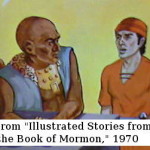But know this: difficult times will come in the last days. For people will be lovers of self, lovers of money, boastful, proud, blasphemers, disobedient to parents, ungrateful, unholy, unloving, irreconcilable, slanderers, without self-control, brutal, without love for what is good, traitors, reckless, conceited, lovers of pleasure rather than lovers of God. (HCSB, 2 Timothy 3:1-4)
It is prophesied that there will be difficult times just preceding the Second Coming of Christ. Though no one knows when the Second Coming will be, we can discern the signs of the times (Matt. 24:36; Mark 13:32; Matt. 16:2-3). There will be “wars and rumors of wars,” and “the whole earth shall be in commotion” (D&C 45:26); “men’s hearts shall fail them, and they shall say that Christ delayeth his coming until the end of the earth” (D&C 45:26). During those days “all things shall be in commotion” (D&C 88:91), “the waves of the sea heaving themselves beyond their bounds” (D&C 88:90) and “a great hailstorm sent forth to destroy the crops of the earth” (D&C 29:16).
It sounds really bad. The question is this: can a rough approximation be made as to when these terrible events will happen? Perhaps this is possible. There are several things that will place tremendous stress on the social and political fabric of the global community as we approach the middle of this century. They include demographic factors, oil depletion, wickedness, environmental factors relating to pollution and global warming, and political factors. I intend to briefly examine each of these. Continue reading “The Last Days”
